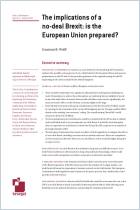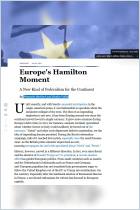Зарегистрируйтесь на getAbstract, чтобы получить доступ к этому краткому изложению.

Зарегистрируйтесь на getAbstract, чтобы получить доступ к этому краткому изложению.
Agnès Bénassy-Quéré, Xavier Ragot and Guntram B. Wolff
Which Fiscal Union for the Euro Area?
Bruegel, 2016
Что внутри?
Three European economists propose some common-sense solutions to heal Europe’s economic woes.
Recommendation
The euro zone, once so promising, has become a drag on economic growth. Economists Agnès Bénassy-Quéré, Xavier Ragot and Guntram B. Wolff blame the disconnect between centralized monetary policy and uncoordinated national fiscal policies. They suggest several valid ideas, such as a federal backstop for the banking system and regional unemployment insurance that would take effect only during crises. Their advice focuses on harmonizing policies across the euro zone’s 19 member states, which tend to act in their own narrow interests. getAbstract recommends this instructive, scholarly report to policy makers and investors interested in solutions to Europe’s malaise.
Summary
About the Authors
Agnès Bénassy-Quéré is a professor at the Paris School of Economics. Xavier Ragot is president of the French Economic Observatory. Guntram B. Wolff is the director of Bruegel.



























Comment on this summary